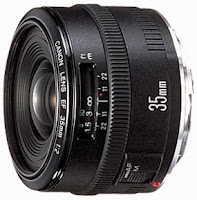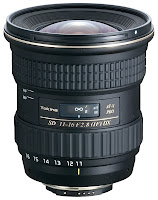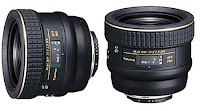Cameras Single Lens Reflex or SLR camera is often called, is a type of camera that is experiencing the development of the various facilities in it. The camera is classified as the most popular camera presence in the community, even to the entering terkinipun SLR camera technology, it is still developed in a digital version. Procurement of various types lensapun not spared from development. Circulation of some type of lens that is a mainstay in the community even better than some of the professional and amateur photographers have tried a lot of new lenses presence in the world of photography. The presence of lenses of various types was, basically to help way more efisen shooting and target practice in the target object. The existence of multiple lenses along with the specification and the characters in it are used to adjust the shape of the object to be photographed so that the snapshot is created properly without having to pester people who will do it. Based on the focal length (focal length) lenses can be divided into three categories:
a. Short lens, wide angle lens
b. Normal or standard lens
c. Long Lens for narrow-angle lens
Is the focal length is the distance between the center point of the lens and the point at which all the parallel light beam was focused .Panjang focus lens is measured in millimeters. To determine the types of lenses in the following photographic camera gets a closer look in on the lens in the following manner:
 1.Normal Lens
1.Normal Lens
 2. Lensa
Wide Agle
2. Lensa
Wide Agle
3. Lensa tele
4. Lensa zoom
5. Lensa Macro

 Fish Eye camera lens in photography serves to create the special character of the targeted object to create the impression distortion of the image. This distortion will form on objects with curved produce memorable images on the right and left sides. This lens has a width of image creation to angle up to 180 degrees. At the Fish Eye lens front lens shape looks more melengkug forward.
Fish Eye camera lens in photography serves to create the special character of the targeted object to create the impression distortion of the image. This distortion will form on objects with curved produce memorable images on the right and left sides. This lens has a width of image creation to angle up to 180 degrees. At the Fish Eye lens front lens shape looks more melengkug forward.
a. Short lens, wide angle lens
b. Normal or standard lens
c. Long Lens for narrow-angle lens
Is the focal length is the distance between the center point of the lens and the point at which all the parallel light beam was focused .Panjang focus lens is measured in millimeters. To determine the types of lenses in the following photographic camera gets a closer look in on the lens in the following manner:

normal lens
Standard or Normal Lens Lens is a lens that has the same or a real distance between the view of the viewfinder with the actual situation, this lens is useful in normal shooting or in everyday situations. Normal lens for a camera is not necessarily normal for another camera. Depending big / movie formats. For example, a camera with a film size 6x6 cm, measuring 85mm normal lens. As for the 35mm format is 43 mm. Generally lenses between 40mm and 55 mm in the category of a normal lens.
Standard or Normal Lens Lens is a lens that has the same or a real distance between the view of the viewfinder with the actual situation, this lens is useful in normal shooting or in everyday situations. Normal lens for a camera is not necessarily normal for another camera. Depending big / movie formats. For example, a camera with a film size 6x6 cm, measuring 85mm normal lens. As for the 35mm format is 43 mm. Generally lenses between 40mm and 55 mm in the category of a normal lens.

Wide agle lens or a wide angle lens can create the impression that the width of the situation around the object. Some examples of shooting with wide angle lenses, making the object of a polynomial in one room can be removed all in one frame shooting. Potentially wide-angle lens and perspective effects create image distortion. One advantage of the wide-angle lens has a large depth of field. Ideal for recording the sights or shooting in cramped spaces.
Camera telephoto lens in photography is helpful in shooting an object whose position is very far from the location of the shooting. This lens also has a character can steal a realistic scene of the targeted objects including dangerous brawl atmosphere. Telephoto lenses have a narrow depth of field, because it is necessary that proper focus image. Somewhat difficult to use for shooting fast-moving objects, especially when moving to araah photographer. The nature of this lens is to compress or "pull forward" items are recorded, so it looks like overcrowding.
Zoom lens camera photography is flexible usage in reading the situation on the shooting environment. By using this lens the photographer is free to move the camera to determine the length of the zoom elected without having to move back and forth in an atmosphere of shooting. Zoom lenses also have several sizes such as 28 mm - 85 mm, 35 mm - 70 mm, 35 mm - 105 mm. The third type of wide angle and normal uniting into space zoomnya. While such a long angle zoom with a size of 70 mm - 210 mm, 80 mm - 200 mm, 80 mm - 300 mm.

Macro lens in a photographic camera function to shoot objects or animals that size is very small. In such cases if the use of ordinary lenses can not bring the focus to the perfect sharpness, due direkomendasikan.Tetapi shooting distance is not using a macro lens that can be handled well although the position of the camera is too close to the object though. This lens is suitable as the executor of the creation of the photographs that having education and technology. By using this lens, the distance to the object dibidiknya shooting can also be done in the close position, this can not be done with the lens - other lenses. Macro lens has a large aperture to achieve (1.5) for example, depending on the brand of lenses. Size macro lens like the 55 mm, 105 mm and 200 mm.

 02:45
02:45
 Unknown
Unknown

















